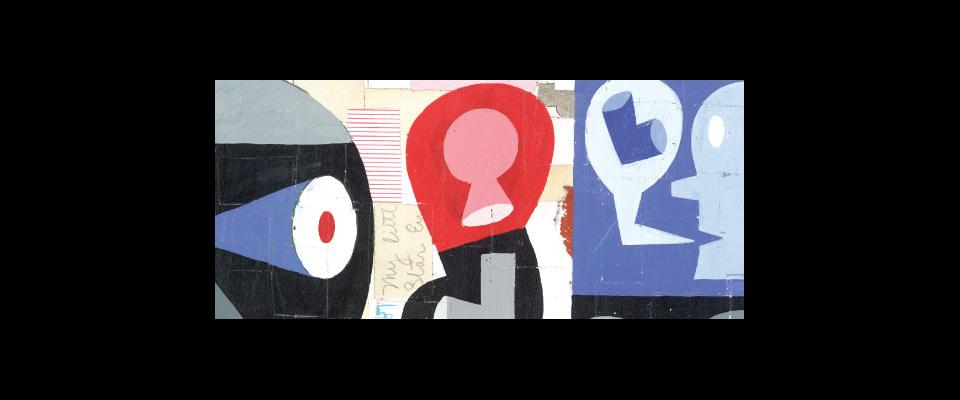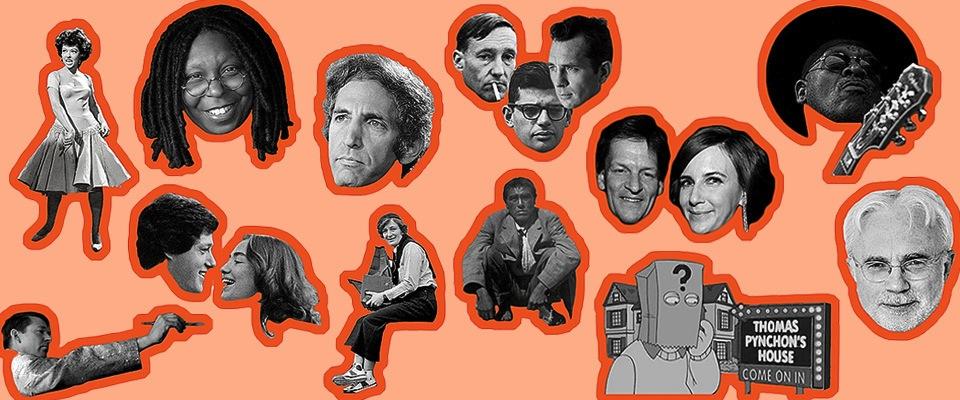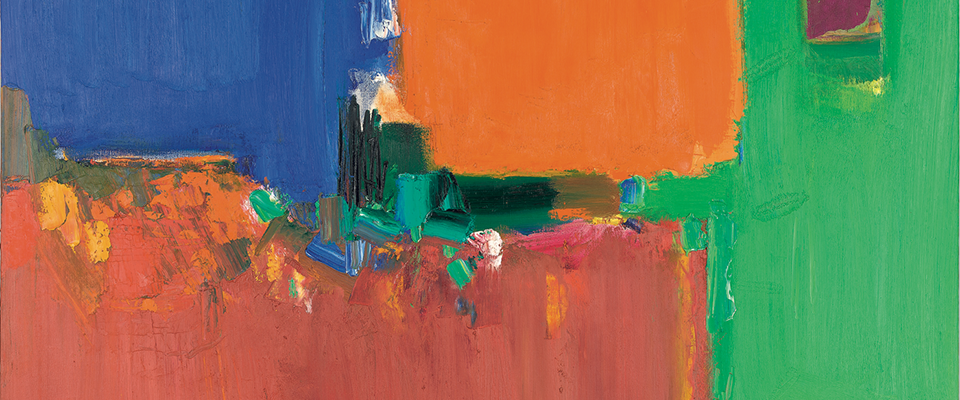Berkeley and the Bay Area art revolution.
Berkeley became an official guest in the White House in the fall of 2009. Not the entire city, but rather Berkeley No. 52, a big colorful abstract painting done by the late Richard Diebenkorn, who died at his home in Berkeley in 1993. It is one of 45 pieces the Obamas borrowed from the National Gallery and other Washington museums, and a marked departure from the staid artistic fare generally favored by the residents of 1600 Pennsylvania Avenue.
Berkeley No. 52 was painted in 1955, at the climax of Diebenkorn’s first abstract phase. Around that time, following the example of his friends Elmer Bischoff and David Park, the young painter abandoned abstraction in favor of more representational work.
Abstract expression was of course meant to free artists from convention, but Bischoff found himself “simply being enslaved [by abstraction] … becoming the victim of stylistic tendencies … running the risk of mouthing something that is not meant.” It was, he said, “like falling out of love.” David Park dramatized his own rebellion by delivering four years’ worth of his abstract work to the Berkeley city dump. For his part, Diebenkorn characterized the move from abstraction to figuration as a kind of forced conversion, jokingly noting that Park and Bischoff were “the people I saw—all the time. And so it was kind of two against one.” He said, too, that he felt he had never given figurative art a “mature chance” and that he “wanted to take a shot at it.”
The friends were soon getting together every Thursday evening, rotating among their studios to do drawings of a live model. “They looked forward to it as a sacred night,” a close relative of Diebenkorn’s recalled. “Somebody’s birthday? Too bad.”
Bischoff had a studio at 2571 Shattuck, right around the corner from Park’s on Addison Street, now the site of the Berkeley Repertory Theatre, while Diebenkorn kept a space at the “triangle building” at Adeline and Stanford, near the Oakland border. The building was razed in the late 1960s to make way for the new rail transit system. Recalling the studio many years later, he said: “It was a triangular room at the back of a tavern. I could open a door and look right down the bar at all the regulars. There was a lot of useless furniture built into the wall, and when I pulled it off you could see many different overlapping layers of house paint. The effect was fascinating.”
The trio formed the core of what became known as the Bay Area Figurative School. By the late 1950s, their work was causing a stir, showing in galleries around the country, and the School was even catching the attention of mainstream publications like Time and Life. It seemed the eyes of the art world, so long focused on New York, had suddenly shifted westward to California.
It’s true that Park, Bischoff, and Diebenkorn are most closely identified with the California School of Fine Arts (now called the San Francisco Art Institute), where all three painters taught and/or studied at one time, but they also have significant connections to both the city of Berkeley and the Cal campus.
Bischoff was born in Berkeley and grew up in the city’s Elmwood District. He enrolled at Berkeley in 1934 and nearly flunked out. “Part of that was due to the fact that my father wanted me to get into architecture, so I took these architecture courses and got Fs and Ds,” he said in a 1977 interview with Paul J. Karlstrom. He stuck with art, eventually earning his master’s.
Diebenkorn left Stanford and was sent to Cal with the Marine Corps as part of a wartime officer training program known as V12. During that time, he also managed to take classes at Cal’s renowned arts department, which had been heavily influenced by the Bavarian abstract expressionist Hans Hoffman.
David Park would join that department years later, in 1955. A Boston native, Park moved to Berkeley in the early ’40s and lived there until his death in 1960.
Bischoff also joined the UC faculty, in 1963, and retired in 1985, after receiving honorary degrees and a Distinguished Teaching Award from the College Art Association. He died in Berkeley, in 1991—in Alta Bates hospital, where he was born.
In their later careers, both Diebenkorn and Bischoff returned primarily to abstraction, and Diebenkorn, in particular, gained international acclaim with his sunny and evocative “Ocean Park” series, painted in his Santa Monica studio. Despite moving back and forth between what he described as two poles of artistic expression—representation, at one end of the spectrum, and abstraction at the other—Diebenkorn insisted that his aesthetic hadn’t changed since his early 20s.
“At that time,” he told The New Yorker in 1987, “neither I nor any of my friends even dreamed of getting a dealer. What made our work possible was that we didn’t think we were painting for history; we were just making individual pictures. If you don’t assume a rigid historical mission, you have infinitely more freedom.”





















